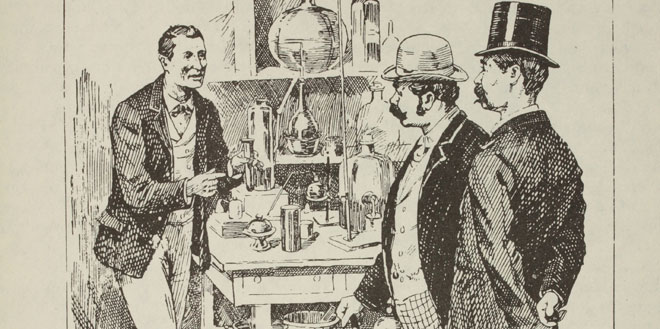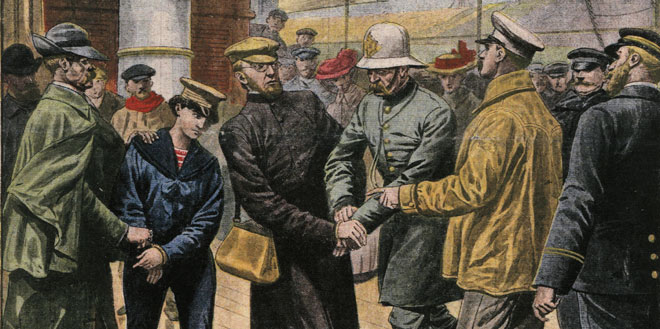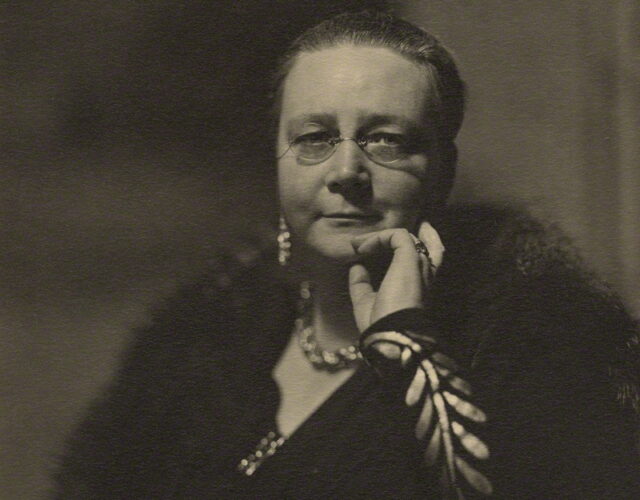In December 2005, in Trumbull County, Ohio, Jermaine McKinney used bleach to clean up the scene of the murders of Rebecca Cliburn and her mother, Wanda Rollyson, before burning the bodies. He also collected the butts of the cigarettes he had smoked at the scene and used a blanket to prevent the transfer of hair to the seat of his car. McKinney liked to watch CSI: Crime Scene Investigation and had learned from the show to worry about hair, sweat, and DNA evidence.
Earlier that year a New Jersey prosecutor in a 25-year-old murder case fretted in his opening statement about the effect of CSI on the jury. “I’ve got big problems. I’ll say it to you right up front here,” said Steven Sand. “What’s my problem? CSI.” With no physical evidence Sand had to hope witness testimony would be enough to convince jurors accustomed to the high-tech gadgetry of crime shows to convict Jeffrey Bayer of the beating death of Rose Twells.
Debate has raged in legal circles during the past decade about the prevalence and impact of the “CSI effect.” Named for CBS’s popular and long-running show and its spin-offs, the CSI effect is believed by some to teach criminals how to avoid detection. Others claim that jurors demand an unrealistically high level of scientific evidence. The show debuted in 2000, and within two years prosecutors and judges were grumbling to reporters that jurors who watched CSI were setting the bar for conviction absurdly high. One judge recounted hearing a juror complain, “They didn’t even dust the lawn for fingerprints!”
Named for CBS’s popular and long-running show and its spin-offs, the CSI effect is believed by some to teach criminals how to avoid detection.
In at least one sense the CSI effect is nothing new. Public understanding of forensic science has long been shaped by fictional portrayals. Before television, readers followed advances in forensic chemistry, fictional and real, through the pages of popular novels and short stories. From the earliest days of the detective genre, forensic science has played a significant role in crime fiction.
Edgar Allan Poe is generally credited with inventing the detective story with “The Murders in the Rue Morgue,” published in 1841. In this and two subsequent stories—“The Purloined Letter” and “The Mystery of Marie Roget”—amateur sleuth C. Auguste Dupin demonstrates to his unnamed friend and chronicler an uncanny ability to solve mystifying crimes by the application of “ratiocination.” But for Dupin it is not forensic science but pure reason and analytical ability that give him an edge over the Paris police. Dupin combs the scene of the crime in “The Murders in the Rue Morgue,” where he finds a hair that will prove pivotal to the solution of the mystery, but in “The Mystery of Marie Roget” the detective solves the case without ever leaving his armchair.
In 1887 Sir Arthur Conan Doyle’s “consulting detective” made his first appearance in A Study in Scarlet. We meet Sherlock Holmes, test tube in hand, in the chemical laboratory of a London hospital, where he is rejoicing over his discovery of a new chemical test for the presence of blood. “Why, man!” he exclaims to his new acquaintance, Dr. Watson, “It is the most practical medicolegal discovery for years!” Over the course of 59 subsequent novels and short stories Holmes solves cases using document analysis, cryptography, and footprint and fingerprint analysis. A first-class chemist, Holmes also establishes a small chemical laboratory at 221B Baker Street to aid in his detective work.
At first, Watson ventures to liken Holmes to Poe’s Dupin. Holmes wastes no time in setting Watson straight on the subject of detection, dismissing Dupin as “a very inferior fellow,” all show and no substance. Before long, Watson offers Holmes a compliment more to his liking when he tells the detective, “You have brought detection as near an exact science as it ever will be brought in this world.” Within decades of Holmes’s debut some of the great pioneers of forensic detection—Alphonse Bertillon and Edmond Locard in France and Hans Gross in Germany—were crediting the fictional detective as the inspiration for their work.

By the time Doyle published his last Sherlock Holmes story in 1927, the golden age of British detective fiction was in full swing. A year later some of the most noteworthy authors in the genre—G. K. Chesterton, John Dickson Carr, R. Austin Freeman, Agatha Christie, Dorothy L. Sayers, and Freeman Wills Croft among them—joined together to form the Detection Club. They formulated a set of rules for detective fiction that would govern the genre for decades. These rules boiled down to fair play for the reader: the detective must solve the crime by his or her own powers of deduction; no vital clues may be concealed from the reader; and no supernatural or divine intervention is permitted.
Each author put his or her unique spin on the detective story. Christie may be the best-known member of the Detection Club, but readers will not find the forensic descendants of Sherlock Holmes in her work. To find the crime-scene investigators of the golden age, we must turn to the novels and short stories of Sayers.
Aristocratic book collector, Oxford University graduate, and amateur sleuth Lord Peter Wimsey—along with his devoted manservant and partner in investigation, Mervyn Bunter—made his debut appearance in Whose Body? in 1923. This short novel features careful observation of the Holmesian variety and little in the way of forensic science. We catch a glimpse, though, of the author’s abiding interest in modern scientific subjects when Wimsey seeks treatment from a nerve specialist for the shell shock he acquired in World War I.
Wimsey’s second outing three years later in Clouds of Witness gives him the opportunity to collect and compare soil samples and track footprints and tire prints in a lovely example of a classic golden-age subgenre: the English country-house mystery. We get a peek at life below-stairs when Bunter collects a sample of bloodstained clothing with the unwitting assistance of a lady’s maid. Under the guise of helping her clean bloodstains from a lady’s skirt, Bunter camouflages the actual collection of evidence as a hypothetical demonstration:

In fact the invention Holmes declares the “most important medicolegal discovery”—a chemical test for the presence of human blood—was developed 14 years after Doyle introduced his famous detective and 25 years before Bunter would explain the collection of bloodstain evidence. In 1901 Viennese physician Karl Landsteiner discovered the four human blood types—A, B, O, and AB. The same year in Germany, Paul Uhlenhuth announced he had learned how to distinguish between animal and human blood after finding that blood from one species produced an immune reaction in the blood cells of another species. In 1902 France sent a man to the guillotine when a test based on Uhlenhuth’s work revealed that the stains on the man’s clothing were human blood rather than the rabbit blood he claimed them to be.
Sayers’s fourth Wimsey novel—published the year the Detection Club was founded—revolved not around bloodstains but poison. The plot of The Unpleasantness at the Bellona Club initially hinges on a question of survivorship. An elderly gentleman, General Fentiman, and his much wealthier sister both appear to have died on the same day. If he had outlived her, he would inherit the lion’s share of her property, which would then pass to his two sons. If, on the other hand, he predeceased her, his sons would inherit only his own meager property, while the sister’s fortune would go to her niece. The lawyer for Fentiman’s sons asks Wimsey to investigate with an eye to determining the precise time at which Fentiman died.
In pursuit of this goal Lord Peter asks analytical chemist Sir James Lubbock to analyze a paint sample from Fentiman’s shoe. Lubbock is busy on another case, performing a Marsh test for arsenic when readers meet him:
In 1836 British chemist James Marsh devised a test capable of detecting even small quantities of heavy metals—including arsenic. Marsh used a U-shaped glass tube open at one end and with a pointed nozzle at the other. In the pointed end he suspended some zinc; at the open end he mixed the suspicious material with acid. If arsenic was present when the acid met the zinc, arsine gas would be produced and made apparent by the formation of a shiny black deposit, called an arsenic mirror. Within five years a simpler test for the presence of arsenic was invented by Hugo Reinsch in Germany. But in 1859 British toxicologist Alfred Swaine Taylor famously fouled up the Reinsch test in a murder trial, which may account for the apparent preference of British experts, real and fictional, for the Marsh test.
At the successful conclusion of his test the fictional Lubbock’s remarks prefigure 21st-century concerns about criminals’ scientific knowledge.
Before long, Wimsey suspects foul play in the death of General Fentiman and contrives to have the body exhumed. This time Lubbock has something more interesting than paint to work on, and his analysis reveals the presence of digitalin, which, depending on the dose, can kill a healthy person or help a person sick with a heart condition.
A search of the rooms of one of the prime suspects reveals that she has developed recent interests in chemistry and crime fiction—the works of R. Austin Freeman are well represented in her library. Freeman’s detective, Dr. John Thorndyke, was arguably the first fictional forensic medical practitioner, and as Wimsey’s friend Chief Inspector Parker of Scotland Yard points out, Freeman’s stories were “full of plots about poisonings and wills and survivorship.” In fact, Parker is inclined to see the suspect’s recent interest in the literature of crime as incriminating in itself.
Lubbock’s lament that poisoners are learning their craft through expert testimony at criminal trials is echoed in the next Wimsey novel, Strong Poison, published in 1930. The book begins with the judge’s summation in the murder trial of mystery novelist Harriet Vane, who has been accused of poisoning her lover with arsenic. When the judge points out that the arsenic Vane purchased was commercial arsenic, meaning it was colored with charcoal or indigo to prevent its being mistaken (or substituted) for sugar, a reporter covering the trial murmurs, “How long, O lord, how long shall we have to listen to all this tripe about commercial arsenic? Murderers learn it now at their mother’s knee.”
In bringing fictional murderers to justice Sayers and other authors relied on the work of real-life forensic scientists. Wimsey, who helps Vane’s defense team prepare for a retrial after the jury fails to reach a verdict, arrives at the solution only after a night spent in consulting a number of reference works, including J. Dixon Mann’s Forensic Medicine and Toxicology, at that time a standard textbook on the subject. Sayers’s familiarity with that volume also played a role in The Documents in the Case (1930), cowritten with Robert Eustace—the pen name of Eustace Robert Barton, an English physician and mystery author who often collaborated with other authors on scientific subjects. The case of a mushroom enthusiast who appears to have died from eating a poisonous toadstool unfolds as a series of newspaper clippings, journal entries, and correspondence between different players in the drama. The dead man’s adult son refuses to believe his father could have made such an elementary mistake as confusing a toadstool for a harmless mushroom. Reluctant sleuthing by one of the victim’s boarders leads to a climactic scene with a polariscope in a university chemistry laboratory. The solution hinges on the fact that substances produced by biological processes rotate a beam of light passed through a polariscope either to the right or the left, while identical substances produced in a lab do not. The polariscope proves the contents of the victim’s stomach contained the synthetic version of the toadstool’s poison.
After The Documents in the Case was published, a chemist wrote to Sayers to inform her that while the plot was fine in theory, in reality natural muscarine—the poison in the toadstool in question—is a rare exception to the rule that natural substances are optically active. Thus, natural muscarine is indistinguishable by polariscope from its synthetic counterpart. The chemist was correct according to what was known of muscarine’s structure in 1930, and Sayers issued a mea culpa. At that time pure muscarine had never been successfully isolated, and Sayers’s chemist correspondent based his claim on a chemical structure for the molecule proposed in 1875 and cited in the 1922 edition of Mann’s Forensic Medicine. But in the mid-1950s scientists finally isolated pure muscarine salt and verified that it, like almost all other organic compounds, does indeed rotate a beam of polarized light. Sayers and Eustace were vindicated by science.
For well over a century and a half crime fiction has been taking readers—and more recently viewers—behind the scenes of forensic detection. Has all this exposure had an effect on real-life jurors? In 2008 researchers published the first empirical evidence on the scope of the CSI effect. One thousand prospective jurors were surveyed about their TV-viewing habits and their expectations for forensic evidence in trials for different types of crime. The survey findings challenged what had become the prevailing wisdom. CSI watchers indeed had higher expectations about the presentation of scientific evidence, but their expectations tended to be more sophisticated than their non-CSI-watching peers. They were more likely to expect DNA evidence in cases of murder, attempted murder, and rape, whereas they would expect to be presented with fingerprint evidence in cases of burglary and gun crimes. On the crucial question of whether they would refuse to convict should these expectations go unmet by the prosecution, the study offered some good news for prosecutors: the increased expectations for scientific evidence didn’t appear to translate into a refusal to convict in the absence of such evidence.
Since 2009 more than 500 scholarly articles have been published investigating the CSI effect from seemingly every angle.
These findings failed to lay the debate to rest. Since 2009 more than 500 scholarly articles have been published investigating the CSI effect from seemingly every angle. Researchers may still argue the case, but undoubtedly few fans of detective fiction attempt to use their favorite books or television shows as a template for what to expect when serving on a jury or as a primer on getting away with murder. And it’s just as well. In the case of Jerome McKinney, the Ohio murderer who tried to avoid detection using techniques he learned from CSI, police caught him after he used one of his victims’ credit cards. And despite the prosecutor’s concerns about the lack of physical evidence in the Jeffrey Bayer case, jurors deliberated for just 10 hours before ultimately voting to convict him for the murder committed 25 years earlier.
Lee Sullivan Berry works in the Center for Oral History at CHF. Her hobby is the history of crime and detection, both real and fictional.




